Tropicfeel Shell Travel Backpack Review
The Tropicfeel Shell Backpack offers a rich ecosystem of accessories aimed squarely at those looking for a complete package—though its cohesiveness is rough around the edges.
Our Verdict
Save time. Get access to brief summaries of our reviews so you can browse and make decisions more efficiently.
Pros
- The bag face doesn't look like it's missing something without modular gear
- You can remove or tuck away the harness system’s support if you don’t need it
- It's easy to expand or compress
Cons
- You forgo a bit of internal organization since it's built for Tropicfeel's modular gear
- Bulky shoes are a bit of a squeeze in the shoe pouch
- Stretchy side pockets fit slim and wide bottles, though the mesh doesn’t feel very durable
Technical Details
-
Capacity
40l
Fully expanded, can be compressed to 20 L
-
Weight (lb)
2.74 lb (1.2 kg)
-
Dimensions
20 in x 11.8 in x 7.5 in (50.8 x 30 x 19.1 cm)
-
Notable Materials
Recycled Polyester, Polyester, Nylon, Span, YKK Zippers, Woojin Hardware
-
Manufacturing Country
Vietnam
-
Laptop Compartment Size
16"
-
Warranty Information
Full Review
If you don’t travel extremely often, there’s a good chance that your travel backpack sits idly in your closet waiting for your next trip. If you’d rather put it to good use, you may want to try the Tropicfeel Shell Travel Backpack, which expands from 20 to 40 liters, and beyond. Along with making it more useful for everyday carry, it also allows you to have a second bag behind on a trip to use as your travel daypack as you make your way through a new place.
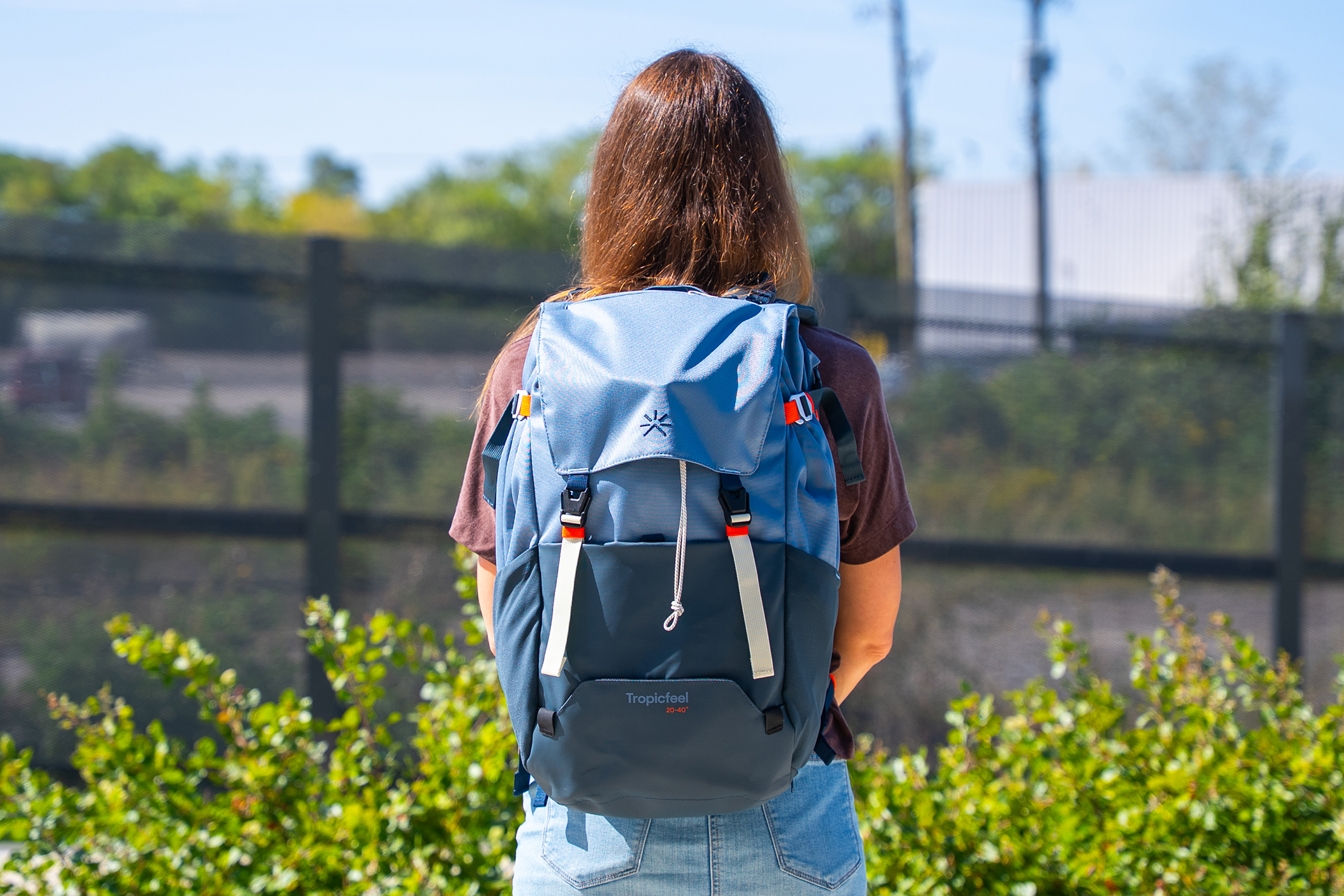
The Tropicfeel Shell Travel Backpack has been on the market for several years but has undergone some upgrades. How does the new version stack up? That’s what we’re here to find out. We’ve been carrying it daily to and from the office, and took it on a weekend trip to an out-of-state wedding to find out.
External Components
The first thing to note about the updated version is that it’s lighter than the original—2.74 pounds compared to 3.3 pounds. That might be due to the change in materials, which are now 33% recycled polyester, 40% virgin polyester, 21% nylon, and 3.5% span, but it might be something else. Either way, we’re happy about the reduction, especially when you start packing things up.
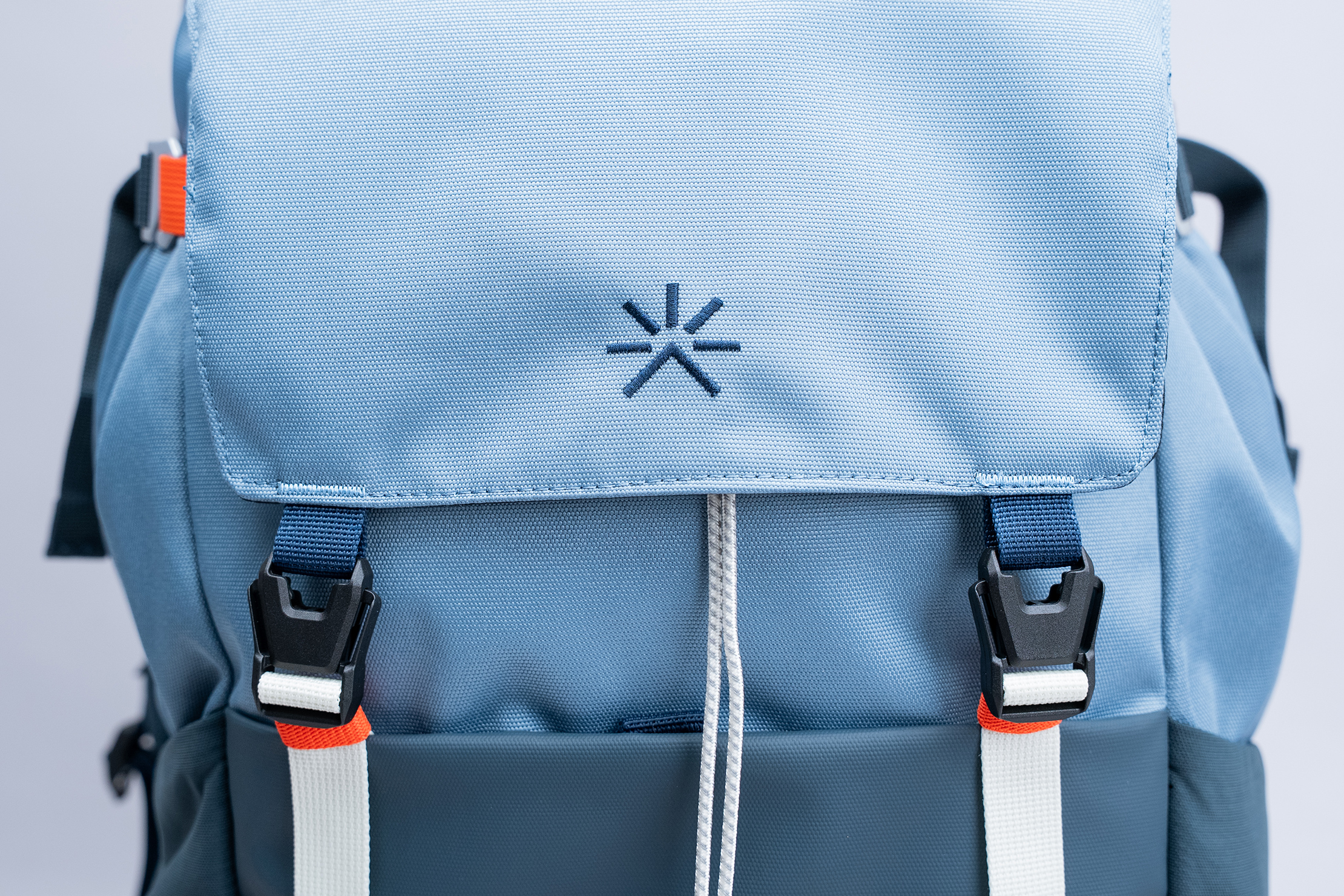
The top portion of the bag feels how you’d expect for polyester, while the bottom half has a coating to repel water and dirt. Since that’s where you’ll be stashing your travel shoes (more on that below) and setting the bag down, we’re happy it’s there.
We’ve got the blue colorway, but at the time of writing you can also get it in gray, black, green, and tan, each with two or more shades of the tone throughout the bag. There’s also contrast from the straps on the front and sides, as well as an accent color on loops and strap keepers. It keeps the bag looking interesting, but not too out there; it still has a heritage styling reinforced by the knapsack-like front flap.
The Tropicfeel logo is stitched there, and the brand name is on the kangaroo pocket near the bottom of the bag, in case you don’t recognize the logo.
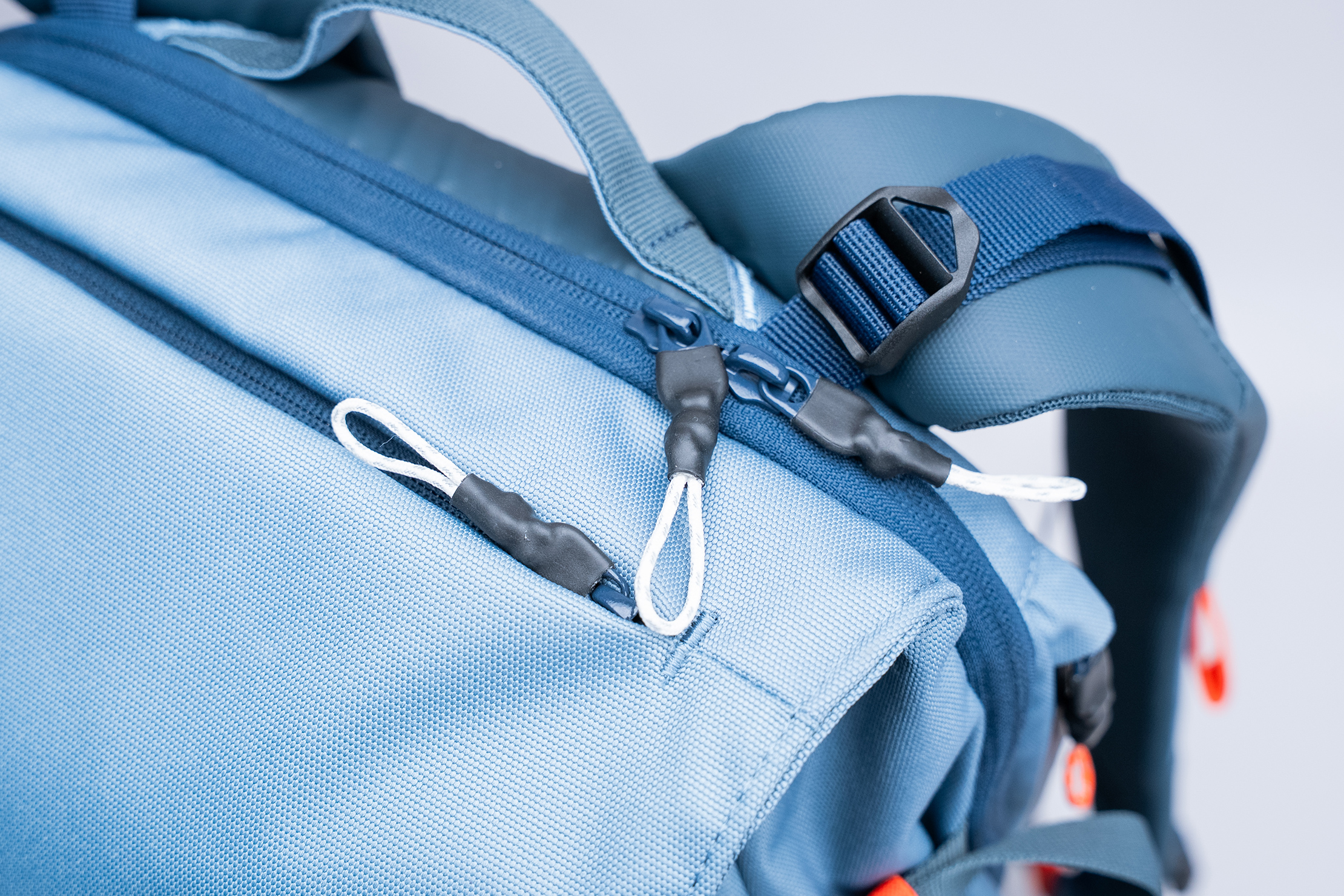
Woojin makes the hardware, and the buckles and adjusters all work well. Tropicfeel also uses YKK zippers with corded pulls wrapped in heat-shrink material. All of the zippers work well and are easy to open and close, and while there’s no water-resistant coating, they are reverse-coil models to keep moisture at bay.

Attached near the top of the back of the bag are two straps with G-hooks at the end. They connect to loops at the same height near the front of the bag, allowing you to cinch it smaller when you have less to carry. These straps include built-in keepers, so there doesn’t have to be a bunch dangling around. You can simply unhook the straps and leave them dangling when you pack more inside, too. They don’t really get in the way since they’re near the back of the bag.

There’s a sturdy carry handle on the top and on the left side of the bag. They’re each comfortable to hold for a time, but you’ll want to carry it as a backpack long term, as they’re somewhat thin and unpadded. If you’re going to be using it with rolling luggage, there’s also a pass-through strap on the back panel. It hooks into a loop on the side, and you can unhook it and tuck the strap behind the back panel if you don’t plan to use it, though it didn’t get in our way in daily use.
The harness system also features portions that can hide behind the back panel, namely, the hip belt. Our primary tester appreciates that, as she’s not always a fan of hip belts, but she doesn’t love them flopping around when they are not in use. In the case of the Tropicfeel Shell Travel Backpack, the belt features small padded wings and webbing straps with built-in keepers that do help support the weight of a loaded-up bag, as long as you properly adjust the load lifters on top of the shoulder straps first.

Along with load lifters, there’s also a sternum strap you can move along daisy chains on each shoulder strap to find the right fit. It features some elastic on one end to snug it up and a strap keeper to hold the excess. The shoulder straps feature decent padding and a breathable mesh lining. There is also one loop on each strap where you can connect a carabiner to hang something like a hat, hand sanitizer, or a keychain, as well as a D-ring for another attachment point on the right strap.

The back panel is also nicely padded, with three raised panels creating vertical and horizontal air channels for breathability. The padding is on the stiffer side, but it’s not uncomfortable and provides structure to the bag.
Fit Notes
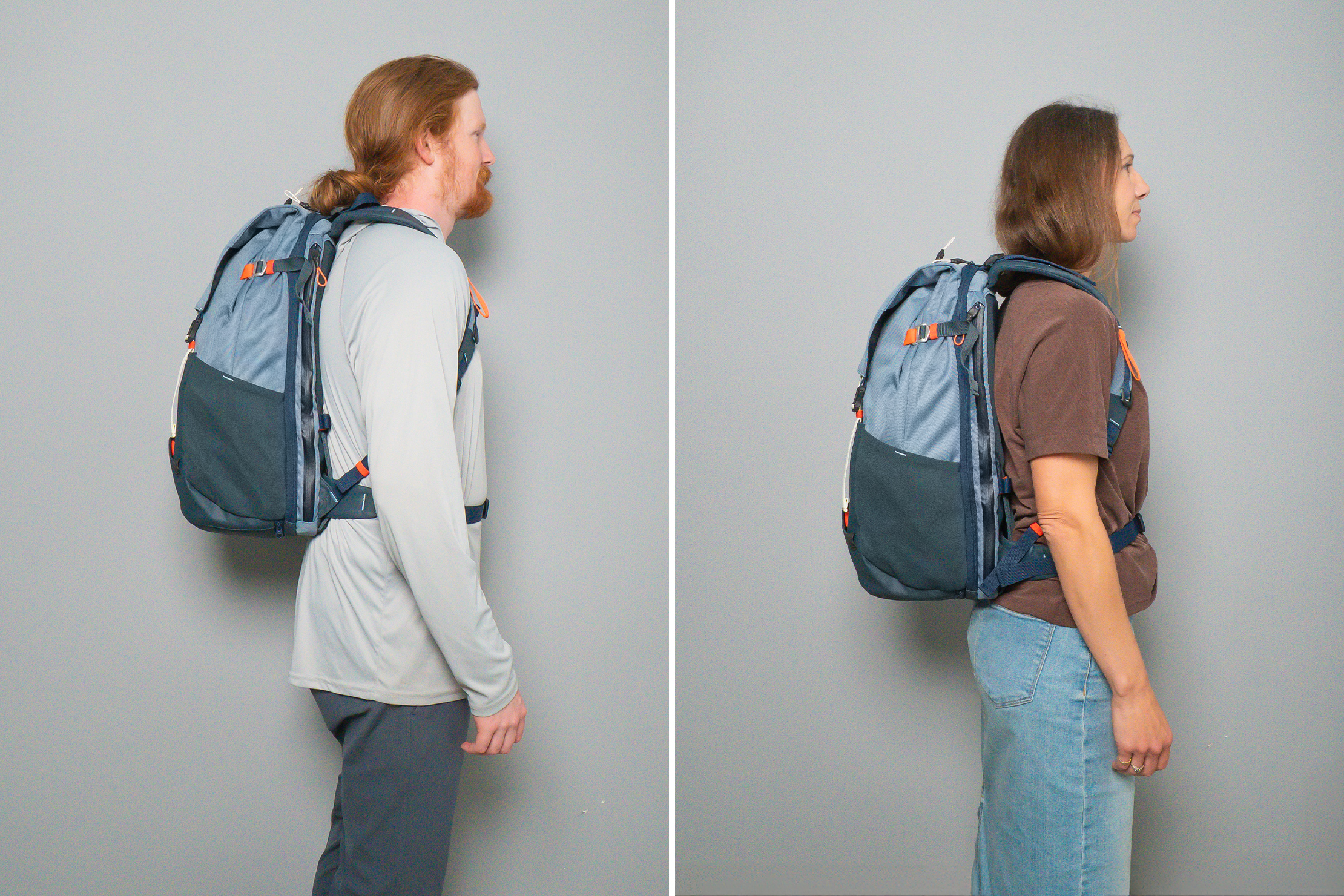
Despite a similar setup, the more robust materials of the Tropicfeel Shell Travel Backpack make it feel sturdier and more structured than the Tropicfeel Shell ProLite, which has a similar setup but different materials. Thanks to the thicker fabric, the Shell Travel Backpack looks nice no matter how it’s packed, and it doesn’t sag when compressed. There aren’t too many straps just randomly hanging around the outside of the bag, and we like the casual vibe.
Once you dial in the fit, it’s a comfortable bag to wear. There are so many straps that it can take a bit of adjusting to get them all right, and the straps take some effort to slide through the adjusters. On the other hand, they stay exactly where you set them once you have them in the right spot, no matter how many times you put on or take off the bag.
Inside The Pack
Unlike some other travel backpacks, the Shell Travel Backpack has modular features you can add on for an additional cost. We’ve used Tropicfeel accessories before, and we like the added benefit they bring, but we’re testing the Shell Travel Backpack as a standalone bag to see if it has merit on its own.
However, if you’re wondering what you could add to cart along with the backpack, we’ll fill you in on a few of your options. To keep your grooming gear close, check out the SEE Toiletry Bag or the SEE Toiletry Bag ProLite. If you want a hanging way to organize your clothing without packing cubes inside your bag, there’s the Tropicfeel Wardrobe, and if you need to make your already large backpack even bigger, you can add on the SEE Front Cube for additional storage.
The toiletry bag and the front cube attach to the front of the bag, which is why Tropicfeel says it’s expandable to 50L from 40L. To do so, pull open the tab on the bottom of the front where it says “Tropicfeel 20-40+”—it sticks to the bag with a magnet. Inside, you’ll find a stretchy piece of elastic with a center G-hook. You slide the strap and hook through the webbing straps on the back of the Dopp kit or front cube, then hook it into a webbing loop in the center of the bag. The wardrobe slides inside to help you organize your clothing on the go.

However, outside of the main compartment, the bag also has many organizational features, so you might not feel the need to add any extras.
There is a quick-access pocket on the front flap where we stick our earbuds, phone, wallet, and keys, though there isn’t any key leash or organization inside. It’s a simple dump pocket, though it’s not so large that finding your gear is difficult.

On either side of the bag are stretchy mesh water bottle pockets topped with elastic. They hold our slim Hydro Flask in place well, yet can also expand to accommodate wide-mouth options. Since they’re so stretchy, they lie flat against the bag when you’re not using them, which is nice. Our only hope is not to snag them on something sharp, as the material feels like pantyhose and may be just as likely to rip and run.
If you flip to the bottom of the bag, you’ll find a zipper along the back panel. It opens to reveal the kangaroo pouch where you can tuck travel shoes or anything else you want to carry outside the bag. The inside of this area has a water-resistant coating and the sides are breathable mesh, so your footwear can air out without soaking through to wet your back as you carry them.

After you tuck your shoes or sandals inside, connect the G-hooks on the top to the Hypalon-like loops on the front of the magnetic flap. You can’t expand or tighten these straps. While they’re a bit stretchy, the kangaroo pocket material is not, so you don’t get much extra space beyond what’s allotted by the material. We had no issue using it to carry a pair of women’s size 10 ballet flats and even Crocs, but you might struggle to fit taller or bulkier shoes or boots inside. However, if yours fit, it’s a useful option when you’re taking the bag on a trip or to the beach, and it completely tucks away when you aren’t using it.

Next up is a pocket on the bottom right side of the back panel. It spans the entire width of the bag’s rear, giving you space to tuck your passport, extra cash, and anything else you want to keep secure. The zipper is fairly hidden, and the pocket will rest against your back as you carry the bag, so anything inside will be safer there than elsewhere.

On the other side of the bag is the zipper for the laptop compartment. It features a water-resistant coating to protect your device, and up to a 16-inch computer fits inside the nicely padded area. We want to be clear—it’s nicely padded on the back and front. If you drop the bag, there’s no false bottom to protect your computer, so you’ll want to take care when setting it down.

Now, onto the main compartment, which you can get into one of two ways: either through the clamshell-style zipper running around the back panel or a cinch top under the flap. Which way works best for you depends on what you’re putting inside and your preference, but in many cases, it’s easier to use the zipper, since you don’t have to unbuckle the top flap to get at it. You can see the cinch top opening when you unzip the bag, so make sure whatever you’re tossing inside goes inside, as you could conceivably toss something through that hole and right back out of the bag if you’re not careful.

Once you’re inside, you’ll see a bit of organization against the back panel in the form of zippered pockets. The rear is divided roughly into thirds horizontally, with the top third holding two small zippered mesh pockets that hold a travel mouse or something similarly sized quite nicely. The middle section is also a zippered mesh pocket, but this one spans the width of the bag. You can use it for an eyeglasses case like our primary tester or anything else you need to wrangle, from tech to toiletries. The bottom third has a zippered pocket of the same size, but this one is made with the polyester liner material. We found it a great place for socks and underwear since it’s about the size of a small packing cube, but you can also use it for any everyday travel accessories you haven’t fit into the other pockets when you’re carrying it daily.
If you’re not using the Tropicfeel Wardrobe, the rest of the space is open to fill with packing cubes, kits, pouches, and anything else you want to put inside. Whether you have it compressed or open, there’s a lot of space to fill, especially at the bottom. When everything is compressed from the outside, there’s a lot of fabric folded inside near the top of the bag, but it didn’t get in our way (mostly because we compressed it for daily use, when we had less, and decompressed it for travel, when we had more!).

Unlike some other Tropicfeel bags, but like the Shell ProLite, the Shell Travel Backpack is definitely usable without additional accessories. It expands to have enough space for your own internal organization if you already own pouches and cubes you like and don’t want to invest in the Tropicfeel ecosystem. We like the durable materials and think this is definitely a backpack you’ll be able to use for trips and years to come.
Usage Timeline
Condition: Excellent
Updated Version
- Interested to try the updated organization
- Wondering how well it will perform without buying every add-on
- Happy to see that Tropicfeel has incorporated recycled materials
Original Version
- Extremely versatile bag that can change its size, weight, and height based on which components you use
- Lots of different accessories you can add in like a wardrobe system, tech pouch, toiletry bag, and camera cube
- Nicely padded back panel makes for a comfortable carry
Condition: Excellent
Updated Version
- It looks good full or compressed
- The shoe pouch can hold large shoes, but not boots
- We like the harness system
Original Version
- There are lots of unique, innovative features going on with this bag. There’s everything you need for travel in one-stop; between the wardrobe, tech pouch, dopp kit, and camera cube, you are good to go. However, using everything at once doesn’t always feel cohesive, and some features interfere with each other. The wardrobe is an interesting setup and can be a great system, but it’s not definitely better than using packing cubes. When using this bag without the accessories, it operates as a large open sack. There are also no compression straps, so it can feel very bulky when using it as a daypack.


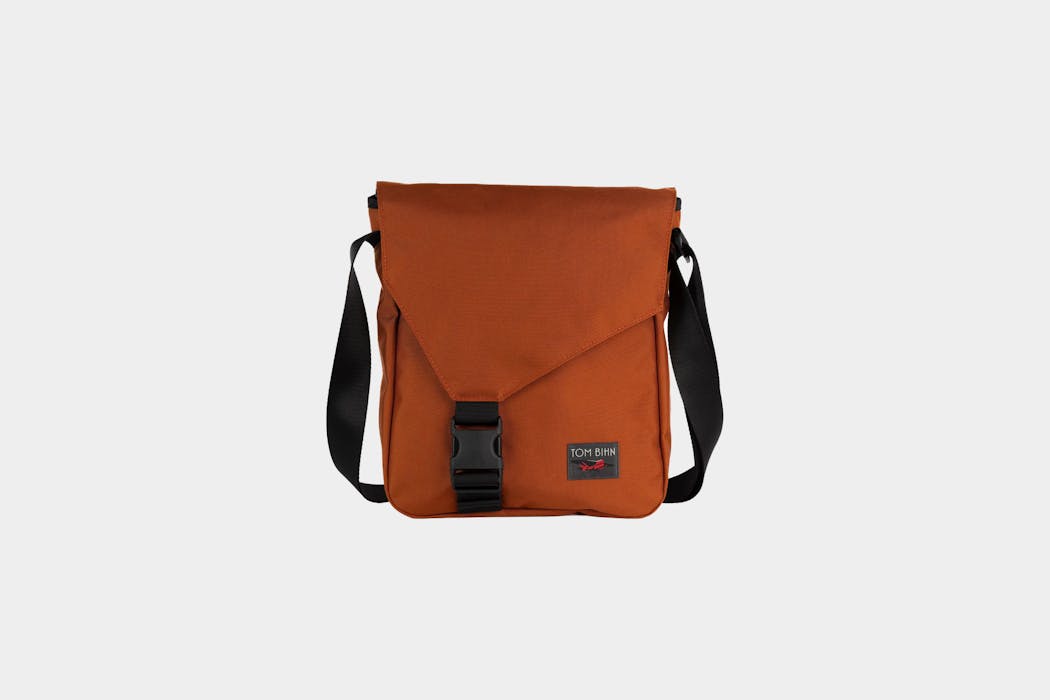




Get your questions about the Tropicfeel Shell Travel Backpack answered from our team and the Pro Community right here on the page. Plus, join discussions with other members about gear, guides, and more.
Join Pack Hacker Pro or, Sign In